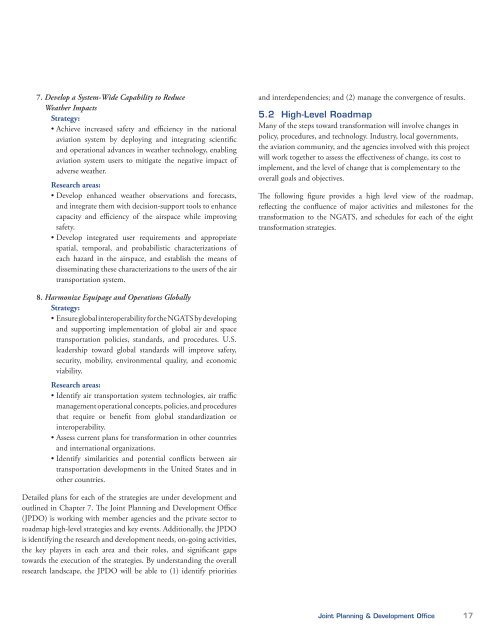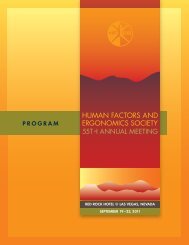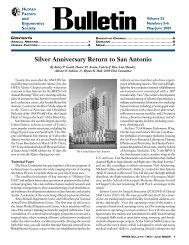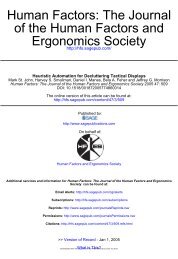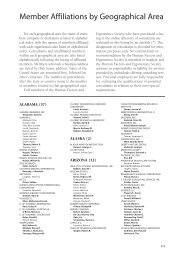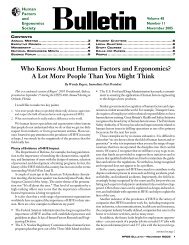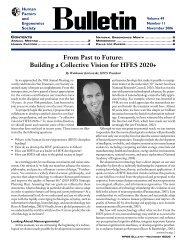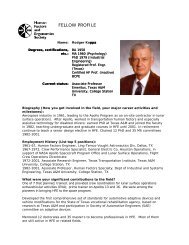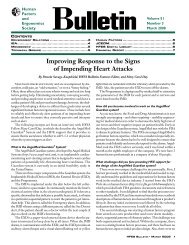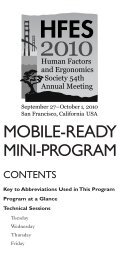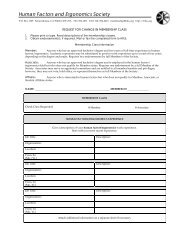Next Generation Air Transportation System Integrated Plan
Next Generation Air Transportation System Integrated Plan
Next Generation Air Transportation System Integrated Plan
Create successful ePaper yourself
Turn your PDF publications into a flip-book with our unique Google optimized e-Paper software.
7. Develop a <strong>System</strong>-Wide Capability to Reduce<br />
Weather Impacts<br />
Strategy:<br />
• Achieve increased safety and efficiency in the national<br />
aviation system by deploying and integrating scientific<br />
and operational advances in weather technology, enabling<br />
aviation system users to mitigate the negative impact of<br />
adverse weather.<br />
Research areas:<br />
• Develop enhanced weather observations and forecasts,<br />
and integrate them with decision-support tools to enhance<br />
capacity and efficiency of the airspace while improving<br />
safety.<br />
• Develop integrated user requirements and appropriate<br />
spatial, temporal, and probabilistic characterizations of<br />
each hazard in the airspace, and establish the means of<br />
disseminating these characterizations to the users of the air<br />
transportation system.<br />
and interdependencies; and (2) manage the convergence of results.<br />
5.2 High-Level Roadmap<br />
Many of the steps toward transformation will involve changes in<br />
policy, procedures, and technology. Industry, local governments,<br />
the aviation community, and the agencies involved with this project<br />
will work together to assess the effectiveness of change, its cost to<br />
implement, and the level of change that is complementary to the<br />
overall goals and objectives.<br />
The following figure provides a high level view of the roadmap,<br />
reflecting the confluence of major activities and milestones for the<br />
transformation to the NGATS, and schedules for each of the eight<br />
transformation strategies.<br />
8. Harmonize Equipage and Operations Globally<br />
Strategy:<br />
• Ensure global interoperability for the NGATS by developing<br />
and supporting implementation of global air and space<br />
transportation policies, standards, and procedures. U.S.<br />
leadership toward global standards will improve safety,<br />
security, mobility, environmental quality, and economic<br />
viability.<br />
Research areas:<br />
• Identify air transportation system technologies, air traffic<br />
management operational concepts, policies, and procedures<br />
that require or benefit from global standardization or<br />
interoperability.<br />
• Assess current plans for transformation in other countries<br />
and international organizations.<br />
• Identify similarities and potential conflicts between air<br />
transportation developments in the United States and in<br />
other countries.<br />
Detailed plans for each of the strategies are under development and<br />
outlined in Chapter 7. The Joint <strong>Plan</strong>ning and Development Office<br />
(JPDO) is working with member agencies and the private sector to<br />
roadmap high-level strategies and key events. Additionally, the JPDO<br />
is identifying the research and development needs, on-going activities,<br />
the key players in each area and their roles, and significant gaps<br />
towards the execution of the strategies. By understanding the overall<br />
research landscape, the JPDO will be able to (1) identify priorities<br />
Joint <strong>Plan</strong>ning & Development Office 17


